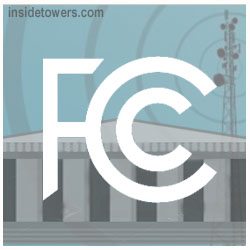The FCC’s proposal to allow states to lease 4.9 GHz public safety spectrum is running into opposition from public safety groups ahead of Wednesday’s vote. The Commission will consider a Sixth Report and Order that would expand access to and investment in the 4.9 GHz (4940-4990 MHz) band; Agency Chairman Ajit Pai says the change would enable states to use the band more efficiently by allowing them to lease the spectrum to commercial entities, electric utilities, and others for public safety and non-public safety purposes.
In 2002, the FCC designated 50 megahertz of contiguous spectrum in the band for public safety use. “Unfortunately, only about 3.5 percent of potential licensees — less than 1 out of 25 — have actually taken advantage of this spectrum,” writes Pai in his blog. He says the “unusual licensing framework” to license for the band is an impediment to wireless deployment.
“Public safety licensees are permitted to use their spectrum only for public safety purposes, with no exclusivity, and share the band by ad-hoc coordination to avoid interference,” says the Chairman. The proposal will protect incumbents “while providing states the flexibility to use the spectrum to boost wireless broadband, improve critical infrastructure monitoring, or facilitate new public safety use cases,” he explains.
The Public Safety Spectrum Alliance (PSSA) asked the FCC to withdraw the proposal from the meeting agenda. It told the agency the underuse was not due to a lack of interest; the proposal to allow states to govern the band will be dangerous. “We believe that the order represents an unprecedented abdication of one of the commission’s core responsibilities: the management of non-federal spectrum, including spectrum used by non-federal public-safety agencies,” stated PSSA.
PSSA stressed: “We respectfully disagree that the commission spectrum management duties should be delegated to each individual state, especially when the states lack the commission’s expertise, especially with respect to addressing interference concerns. Given that first responders are the spectrum users most likely to suffer interference, the nation cannot afford for the 4.9 GHz band to serve as the laboratory for an untested and suspect spectrum management experiment.”
The group said that while the FirstNet nationwide public safety broadband network has helped satisfy some public safety needs for communications, public safety will still need more spectrum for new technologies such as 5G. The PSSA urged the Commission to give the band to FirstNet to help provide for public safety’s future spectrum needs. AT&T, which is the FirstNet contractor, also opposes the current draft.
Meanwhile, the Enterprise Wireless Alliance (EWA) asked for more details on the proposal. It told the agency it favors any regulatory framework that could lead to more use of the band, but it’s not sure how the Commission intends to monitor progress. It asked several questions, including: whether there’s an end date by which states must establish a spectrum lease process and when they must identify who leases the spectrum.
In contrast, the Wireless Internet Service Providers Association (WISPA) supports the plan. “Despite many attempts to maximize use of the band, it remains largely unused outside of metropolitan areas,” states WISPA VP of Policy Louis Peraertz. “This leasing model will streamline use of the vastly underutilized band without compromising the ability of public safety users to access the spectrum.” WISPA predicts manufacturers would quickly develop equipment and says the change would especially benefit both rural and urban consumers who rely on fixed wireless networks to access the internet.





Reader Interactions